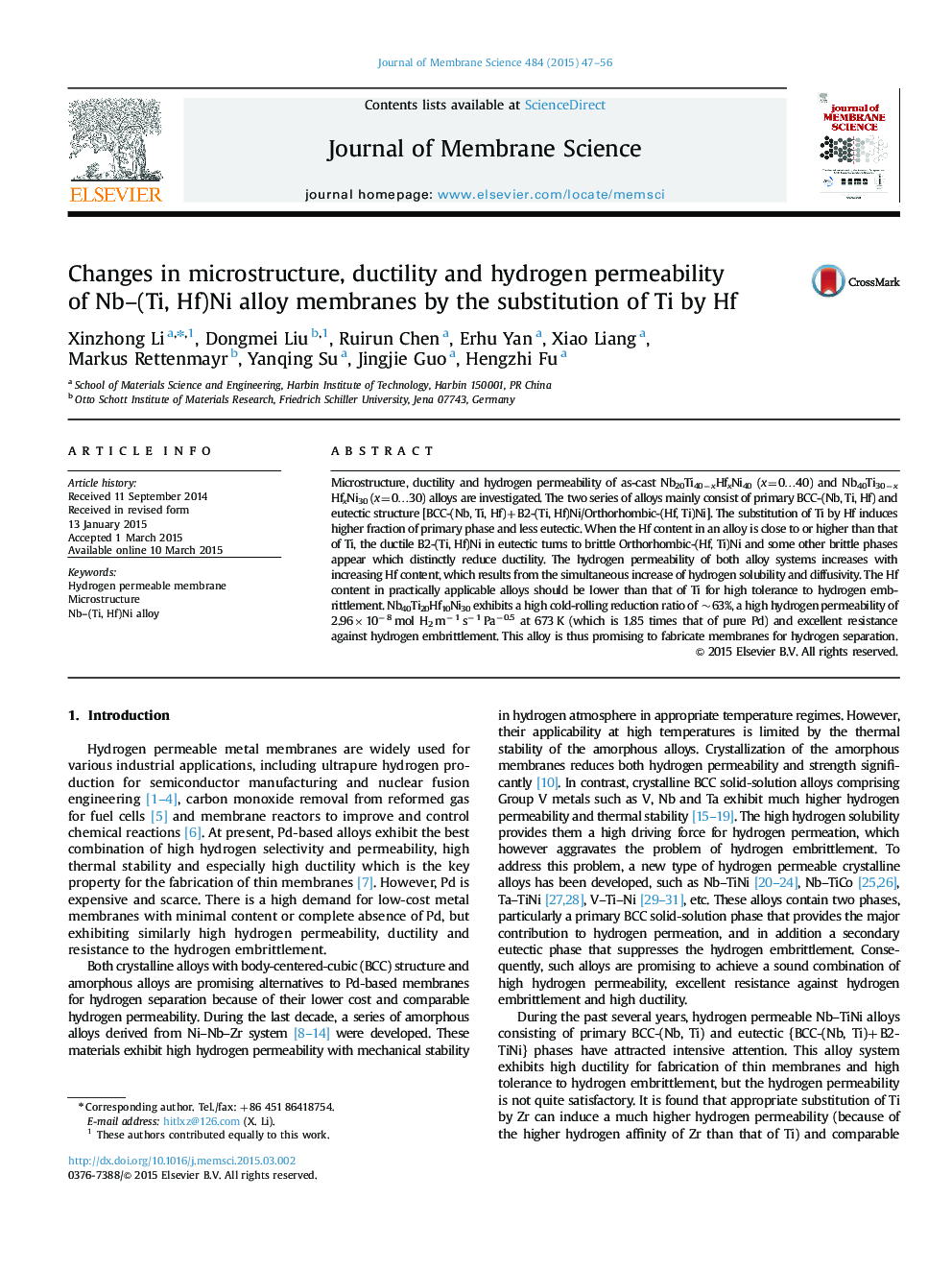| Article ID | Journal | Published Year | Pages | File Type |
|---|---|---|---|---|
| 632965 | Journal of Membrane Science | 2015 | 10 Pages |
•The substitution of Ti by Hf induces more primary phase and less eutectic.•The hydrogen solubility increases with increasing Hf content in Nb–(Ti, Hf)Ni alloys.•The substitution of Ti by Hf in Nb–(Ti, Hf)Ni alloys induces higher permeability.•Nb40Ti20Hf10Ni40 is promising to make high-performance membranes for H2 separation.
Microstructure, ductility and hydrogen permeability of as-cast Nb20Ti40−xHfxNi40 (x=0…40) and Nb40Ti30−xHfxNi30 (x=0…30) alloys are investigated. The two series of alloys mainly consist of primary BCC-(Nb, Ti, Hf) and eutectic structure [BCC-(Nb, Ti, Hf)+B2-(Ti, Hf)Ni/Orthorhombic-(Hf, Ti)Ni]. The substitution of Ti by Hf induces higher fraction of primary phase and less eutectic. When the Hf content in an alloy is close to or higher than that of Ti, the ductile B2-(Ti, Hf)Ni in eutectic turns to brittle Orthorhombic-(Hf, Ti)Ni and some other brittle phases appear which distinctly reduce ductility. The hydrogen permeability of both alloy systems increases with increasing Hf content, which results from the simultaneous increase of hydrogen solubility and diffusivity. The Hf content in practically applicable alloys should be lower than that of Ti for high tolerance to hydrogen embrittlement. Nb40Ti20Hf10Ni30 exhibits a high cold-rolling reduction ratio of ~63%, a high hydrogen permeability of 2.96×10−8 mol H2 m−1 s−1 Pa−0.5 at 673 K (which is 1.85 times that of pure Pd) and excellent resistance against hydrogen embrittlement. This alloy is thus promising to fabricate membranes for hydrogen separation.
